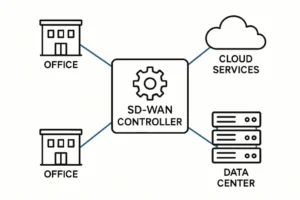Mathematics becomes much more approachable when abstract ideas are represented visually. One of the simplest yet most powerful tools in this regard is the number line. Teachers across grade levels use it to help students grasp addition, subtraction, and the relationship between numbers. While many students encounter horizontal versions early on, vertical formats are also available and can sometimes be a better fit for specific learners. This article explores the concept of number lines, their practical use in classrooms, and strategies to maximize their learning potential.
Why Number Lines Matter in Education
Number lines provide more than just a linear representation of numbers; they introduce students to the concept of order, distance, and direction.
Building a Foundation for Arithmetic
Children first learning to count benefit from seeing numbers laid out in a continuous sequence. By physically moving along the line, they can begin to internalize the mechanics of addition and subtraction rather than memorizing isolated facts.
A Visual Bridge to Negative Numbers
When students encounter negative integers, the line helps them see that numbers don’t stop at zero. Extending in both directions makes it possible to represent real-world scenarios, like temperatures below freezing or bank balances in debt.
Preparing for Advanced Concepts
Beyond early arithmetic, number lines are stepping stones to fractions, decimals, and even algebra. They help students visualize proportional reasoning and distances between values.
Different Approaches to Teaching with Number Lines
Teachers have a variety of ways to integrate number lines into lessons depending on student needs and curriculum goals.
Horizontal Number Lines
The traditional format places zero in the center with positive values to the right and negative values to the left. This design is intuitive because it matches the left-to-right reading pattern in English.
Using a Vertical Number Line
An alternative format is the vertical number line, which places zero in the middle and numbers extending up and down. Some educators find this more natural when teaching concepts like positive and negative temperatures or elevations. For students who think spatially, the vertical design can simplify understanding “up” as positive and “down” as negative.
Interactive and Tactile Methods
Placing a large number line on the floor allows students to physically walk through addition and subtraction problems. Magnetic versions on a whiteboard or laminated strips on desks let students manipulate markers or counters, making math hands-on.
Classroom Strategies for Using Number Lines
Number lines are versatile, and teachers can adapt them to many classroom activities.
Counting and Skip-Counting
For younger learners, teachers can practice counting forward and backward, then progress to skip-counting by twos, fives, or tens. This prepares students for multiplication.
Comparing and Ordering Numbers
By placing different values on the line, students can visually compare their size and order. This is especially useful when working with negative numbers or decimals.
Solving Word Problems
A number line provides a step-by-step visual to unpack word problems. For instance, if a word problem describes a submarine diving below sea level and then rising again, a vertical representation illustrates the situation more clearly.
Extending Number Line Use Beyond Math
Number lines also have surprising applications outside traditional arithmetic lessons.
Timeline Activities
Teachers in social studies can use number lines as timelines for historical events, making chronological order easier to understand.
Measuring Progress in Goals
In a classroom behavior system, a line can mark progress toward rewards. Students physically move a marker as they work toward completion.
Science Applications
In physics or biology, students might use a line to plot changes in temperature, pH values, or other variables.
Helpful Lists for Teachers
To support learning, here are some practical, non-math-focused lists that still tie in with classroom use:
Three Engaging Warm-Up Activities for Young Students
- Quick stretches while counting together.
- Vocabulary word sorting on a classroom wall.
- Singing a short educational song to start the day.
Five Items Every Classroom Can Benefit From
- Visual aids like charts and posters.
- Dry-erase boards for quick explanations.
- Comfortable reading corners with books.
- Organized storage bins.
- Technology tools such as tablets or projectors.
Four Strategies to Encourage Participation
- Rotate leadership roles during activities.
- Incorporate movement into lessons.
- Provide small, achievable goals.
- Celebrate student contributions publicly.
Each of these lists demonstrates how educators can bring energy and engagement into lessons that might otherwise feel routine. By weaving in tools like a number line, students connect learning with real-world applications.
Choosing the Right Classroom Resources
Educators looking to expand their toolkit should consider which type of number line best fits their teaching style. While horizontal designs remain standard, the vertical number line offers a unique advantage for lessons involving positive and negative integers. By introducing variety, teachers can reach more students and strengthen mathematical understanding.
Final Thoughts
Number lines might look simple, but they unlock deeper comprehension of mathematics. Whether horizontal or vertical, they provide a pathway for students to grasp abstract concepts through visualization and interaction. As classrooms continue to adapt teaching methods, tools like these remain timeless, giving learners of all levels a clearer view of the number system and how it applies to everyday life.
Read more: Choosing Long-Lasting Roofing Solutions for Your Home – Croudmomentum.com
Elegant Dining Chairs for Everyday Living: Comfort Meets Style – Croudmomentum.com
Simple Ways to Improve Indoor Air Quality – Croudmomentum.com








